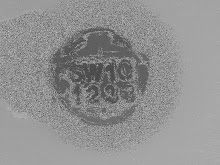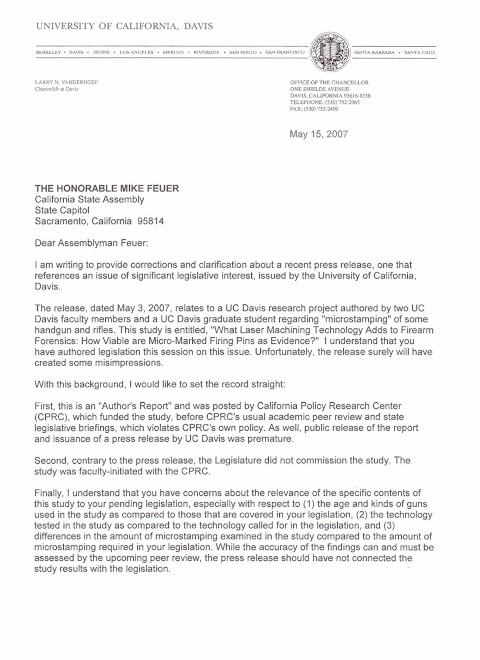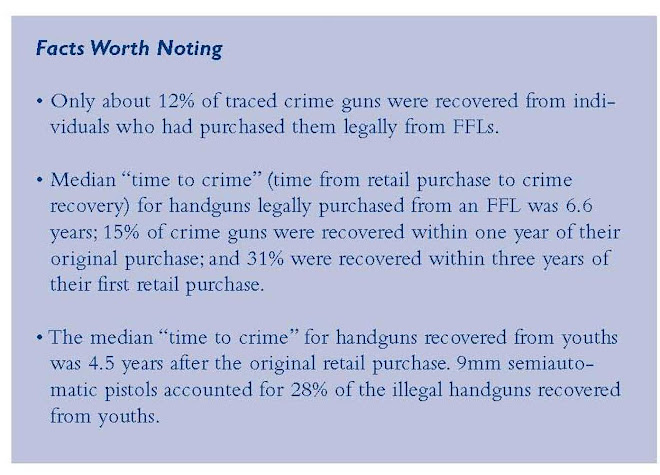Microstamping identifies the firearm when a firearm is not recovered at the crime scene. How does that help law enforcment? It is a good question.
Many opponents state that the only thing microstamping does is identify the original purchaser and needlessly harasses them. However, this argument is hollow. If a law abiding gun owner has a firearm stolen, it behoves me to think they would not report the theft, having to figure that the theft would be part of a possible home invasion and other personal items of far greater value would be stolen.
However if the theif borke into the gun owners home to only take the firearms, than more than likely, the theif was aware of the firearms location and the personal schedule of the lawful owner. This also brings up the question: why wouldn't you report the theft?
Further it is not out of the question that the lawful firearm owner might have been identified by a theft ring operating in the area and possibly at teh firing range where the gun owner enjoys their sport. Once again i think it is in the best interest of the lawful gun owner to report the theft, to allow the police to investigate this potential.
So, I am a law abiding gun owner and my firearm is stolen, I report the theft to my local police, they being an investigation and file the report.
Now, if my firearm is used to committ a murder and it is found at the scene, guess what I am am getting a phone call or visit by the police no matter what. that is just eh way it goes. Luckily I have my report. Hopefully the firearm is recovered fast, since it is better to clear the issue as soon as possible instead of years later.
Now, if my firearm is stolen and it is outfitted with microstamping, and it is used to committ a murder and the police find cartridge with the code, but do not recover the firearm, guess what, same situation, I am getting a phone call or a visit. However, once again the matter is taken care of the first time the firearm is used, whether it is recovered or not.
So, how does this help lawenforcement? first it identifies the firearm, it also leads tehm to the area where it was stolen and possibly dovetails into the theft investigation. maybe their is a theft ring operating in the area where the firearm is stolen and maybe the police have suspects, which leads to know associates, which leads to the possbile purchaser of the firearm.
The key is Intel and crime patterns. Microstamping is a piece of Intel that can be used, the newer the intel the better the analysis.
The FBI and ATF has developed ways of analyzing certain criminal enterprises by the patterns they form when they engage in criminal behavior. The critical element to defining these patterns and analyzing them is good INTEL or “real-time” data.
This has become even more important with the formation of homeland security. Now new tools are being adapted from military methods of INTEL analysis, such as link analysis and social network analysis. By overlaying INTEL data from firearms trafficking to known networks of gangs, gang associates and known drug trafficking networks a complete picture is developed. Of course these maps or links are only as good as the INTEL, i.e. fresh information.
The FBI states that through their work, criminal enterprises or gangs are creatures of habit, and they often establish specific patterns in their activities. For firearm trafficking, this means they might prefer a certain type of straw purchaser, a specific source location or licensee, or a favorite method of distribution. Such patterns can be found through analysis of data; the problem is the current data is acquired when the firearm is recovered, instead of when the firearm is first used. The key once again is faster INTEL.
Law enforcement is now dealing with a migration pattern of gangs and other criminal enterprises and this network is now stretching farther across the country.
If microstamping data can be gathered at the instant the firearm is used in a crime, the greater chance for better linking and mapping through analysis.
Firearm trafficking becomes vulnerable to these new techniques such as link analysis and social network analysis, when an analysis of the data can form into patterns within a narrower window of time.
So, when trying to find unique ways of getting law enforcement the information they need to combat trafficking, while maintaining the rights of law abiding gun owners, it seems possible, microstamping could strike that balance.












